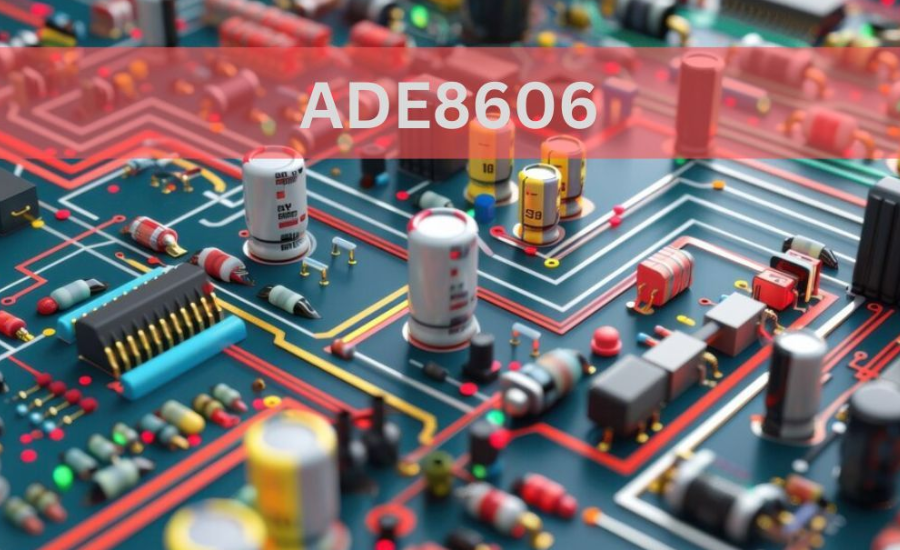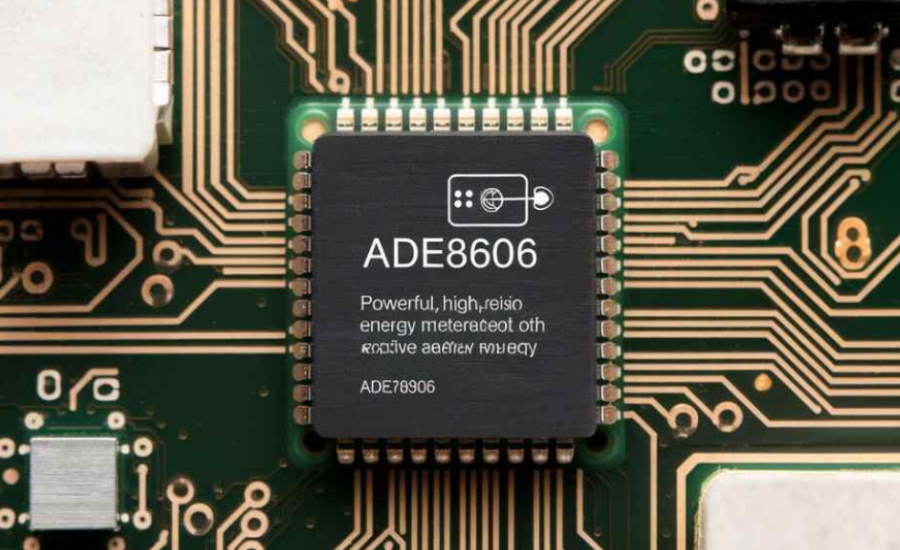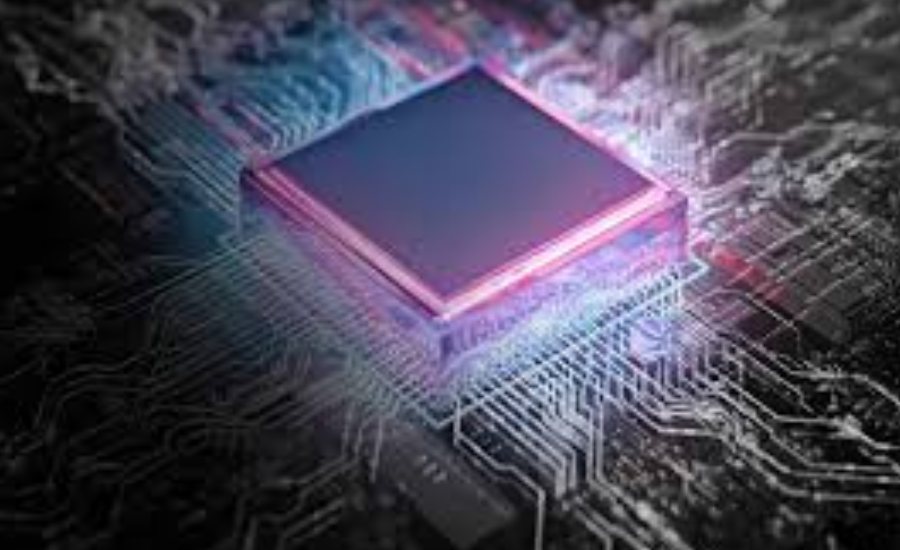The Ultimate Guide to ADE8606: Essential Insights for Engineers
The ADE8606 is an advanced integrated circuit specifically engineered for energy metering applications. Despite its sophisticated design, many engineers encounter challenges in fully leveraging its capabilities. Inaccurate readings and inefficient power usage can result in significant errors and squandered resources in smart meters and energy monitoring systems. Such inaccuracies can adversely affect both project results and customer satisfaction. Fortunately, the ADE8606 stands out as a high-precision analog front-end solution that delivers exceptional accuracy, minimal power consumption, and a wide range of measurement functionalities.
This comprehensive guide will provide you with the insights needed to effectively integrate the ADE8606 into your projects, optimize your energy metering solutions, and elevate performance and reliability to new heights.

Understanding the ADE8606: A Key Component in Energy Metering
The ADE8606 is a cutting-edge integrated circuit developed by Analog Devices for precise energy measurement. It consolidates multiple functionalities into a compact form factor, allowing it to measure voltage, current, and power with remarkable precision. The chip is widely utilized in smart meters and energy monitoring systems, enabling utilities and industries to efficiently monitor energy consumption. Its small size combined with its robust features makes it an ideal choice for modern energy management applications.

The Evolution of Energy Metering Technologies
Energy metering has progressed significantly from its early mechanical roots in the 20th century, which relied on rotating disks to measure power usage. The 1970s ushered in electronic meters, enhancing accuracy, while the 1990s introduced digital meters equipped with additional features. In today’s landscape, smart meters dominate, with the ADE8606 representing a pivotal advancement since its introduction in 2015. This device merges high precision with digital communication capabilities, enabling real-time monitoring and management of energy resources.
Highlighting Key Features of the ADE8606
The ADE8606 is packed with a suite of impressive features, including:
- High-Resolution Measurements: It provides detailed voltage and current readings, calculating real, reactive, and apparent power while maintaining low power consumption—ideal for battery-operated devices.
- Integrated Temperature Compensation: Built-in temperature compensation ensures accuracy under varying environmental conditions.
- Multiple Communication Interfaces: This chip supports various communication protocols for seamless integration, enhancing its adaptability for different applications.
- Programmable Gain Amplifiers: These amplifiers offer flexibility in measurement applications, making the ADE8606 suitable for a broad array of energy metering needs.
Advanced ADC Capabilities for High Precision
Equipped with state-of-the-art analog-to-digital converters (ADCs), the ADE8606 is capable of detecting minute changes in voltage and current, providing 24-bit resolution for extraordinarily precise readings. This level of detail is crucial for accurate billing and effective energy management. The ADCs maintain consistent accuracy across various load conditions, enhancing the chip’s reliability in diverse applications.
Versatile Measurement Capabilities
The ADE8606 excels in measuring a variety of power types, including:
- Real Power: Represents actual energy consumption.
- Reactive Power: Important for power factor correction.
- Apparent Power: Provides insight into the total capacity of the system.
Additionally, the device computes root mean square (RMS) values for both voltage and current, offering frequency measurements essential for grid monitoring. These diverse measurement capabilities facilitate comprehensive energy analysis, making the ADE8606 an invaluable tool in energy metering.
Energy Efficiency at Its Core
Designed with energy efficiency in mind, the ADE8606 employs advanced CMOS technology to keep power consumption under 15mW during standard operation. This characteristic is particularly beneficial for battery-powered meters, contributing to a reduced overall energy footprint for metering systems. The device features power-saving modes, further enhancing its efficiency and prolonging battery life in portable monitoring applications.
Integrated Voltage Reference for Enhanced Accuracy
The ADE8606 incorporates a precise integrated voltage reference, which guarantees reliable measurements across various operational conditions. This feature ensures stability even when environmental temperatures fluctuate. By eliminating the need for external voltage references, the ADE8606 simplifies system design, reduces costs, and boosts overall measurement reliability.
On-Chip Phase Compensation for Precision Power Measurement
Accurate power measurement hinges on effective phase compensation, a capability that the ADE8606 provides with its on-chip circuitry. This feature corrects any phase discrepancies between voltage and current signals, ensuring accurate calculations, especially at higher frequencies. Programmability allows flexibility with different sensor types, ensuring reliable performance across various applications.
Flexible Communication Interfaces for Easy Integration
Supporting both SPI and I2C communication interfaces, the ADE8606 facilitates straightforward integration with a variety of microcontrollers. This versatility allows for high-speed data transfer, enabling real-time energy monitoring. Programmable interrupt pins and pulse outputs further enhance the chip’s utility, making it adaptable for various system designs.
Diverse Applications of the ADE8606
The ADE8606 finds its application across a range of energy measurement scenarios, including:
- Smart Meters: These devices deliver real-time energy consumption data, fostering two-way communication between utilities and users. The ADE8606’s precision ensures equitable billing and supports innovative tariff structures.
- Power Monitoring Systems: Used in industrial settings, these systems monitor energy use across large facilities, optimizing consumption and identifying inefficiencies.
- Renewable Energy Installations: The chip accurately measures output from solar panels and wind turbines, aiding in energy production tracking and grid integration.
- Load Profiling: This feature analyzes energy consumption patterns, helping utilities design more effective pricing structures and energy-saving strategies.
- Uninterruptible Power Supplies (UPS): The ADE8606 aids in monitoring power quality and managing transitions to backup power, enhancing the efficiency of critical systems.
How the ADE8606 Operates: A Step-by-Step Overview
The functionality of the ADE8606 involves a series of integrated processes, commencing with the sampling of voltage and current inputs. These analog signals undergo conversion into digital form via high-resolution ADCs, followed by the application of digital signal processing techniques. The chip calculates power, energy, and various electrical parameters, applying calibration and compensation factors to ensure accuracy. The processed data is subsequently transmitted through its communication interfaces, guaranteeing high-precision energy measurement.
Signal Acquisition Process
The initial stage of operation for the ADE8606 involves dedicated inputs for voltage and current signals, capable of accommodating a broad spectrum of input levels. Utilizing programmable gain amplifiers, the chip optimally adjusts signal strength, ensuring efficient use of the ADC’s range. Anti-aliasing filters are integrated to eliminate high-frequency noise, resulting in clean, accurate signal capture.
Advanced Signal Processing Techniques
Following signal acquisition, the ADE8606 processes the digital signals using advanced algorithms. Digital filtering eliminates unwanted frequency components, while vector calculations enable accurate power measurements. Calibration coefficients correct for system errors, and temperature compensation further enhances precision. By integrating power over time, the chip effectively calculates energy consumption, ensuring reliable and thorough energy measurement.
Comprehensive Data Output Capabilities
The concluding phase in the ADE8606 operation is data output. The chip can provide processed data through various communication interfaces, including raw measurement data for external processing. With energy pulse outputs suitable for traditional meter displays and interrupt signals for significant events, the ADE8606 supports data streaming for real-time monitoring and internal data storage for later retrieval.

Advantages of Employing the ADE8606 in Energy Metering
Utilizing the ADE8606 in energy metering applications offers a multitude of benefits, including:
- Exceptional Accuracy: With power measurement errors below 0.1%, the ADE8606 ensures reliable billing and energy management.
- Energy Efficiency: Its low power consumption reduces the device’s overall energy footprint, making it ideal for battery-operated systems.
- Cost-Effectiveness: The high level of integration minimizes the need for external components, leading to lower system costs and reduced maintenance needs.
- Versatility and Scalability: The chip accommodates various metering configurations, suitable for residential, commercial, and industrial applications, as well as both grid-connected and off-grid systems.
Key Technical Specifications of the ADE8606
The ADE8606 boasts impressive specifications that underline its performance in diverse environments. Key electrical, measurement, and environmental characteristics are outlined below, emphasizing their importance for effective implementation in energy metering projects.
Electrical Characteristics
The ADE8606 operates efficiently within a voltage range of 2.5V to 5.5V, consuming less than 1mW of power. This minimal energy requirement positions it as an excellent choice for continuous operation in various applications.
Measurement Precision
In energy metering, precision is paramount, and the ADE8606 delivers exceptional accuracy across multiple measurement types. With a measurement accuracy of ±0.1%, it ensures dependable data essential for billing and analytical purposes.
Robust Environmental Performance
The ADE8606 operates effectively in a temperature range of -40°C to +85°C, making it suitable for both indoor and outdoor applications. Its design enables it to withstand humidity and electromagnetic interference, ensuring reliable performance in challenging environments.
Successfully Integrating the ADE8606 into Your Projects
The integration of the ADE8606 into your energy metering project necessitates meticulous planning and execution. Key steps include system design considerations, circuit implementation, and software integration. Each phase is critical for ensuring optimal performance and accuracy in energy metering applications.
System Design Considerations
Incorporating the ADE8606 into your design requires attention to several factors, including power supply specifications, signal conditioning, isolation, and grounding. Additionally, communication interfaces and data processing capabilities must be well-planned, laying the groundwork for a robust energy metering system.
Frequently Asked Questions (FAQs) about the ADE8606
Q: What is the ADE8606 used for?
A: The ADE8606 is primarily designed for energy metering applications, enabling precise measurement of voltage, current, and power in smart meters and energy monitoring systems. It helps utilities and industries monitor energy consumption efficiently.
Q: What are the key features of the ADE8606?
A: Key features of the ADE8606 include high-resolution measurements (24-bit ADC), integrated temperature compensation, multiple communication interfaces (SPI and I2C), programmable gain amplifiers, and energy-efficient operation under 15mW.
Q: How does the ADE8606 ensure accurate measurements?
A: The ADE8606 employs advanced analog-to-digital conversion, on-chip phase compensation, and temperature compensation to maintain measurement accuracy across various load conditions and environmental factors.
Q: What types of power can the ADE8606 measure?
A: The ADE8606 measures real power (actual energy consumption), reactive power (for power factor correction), and apparent power (total system capacity), making it versatile for various energy metering needs.
Q: Can the ADE8606 be used in renewable energy applications?
A: Yes, the ADE8606 is suitable for renewable energy installations, accurately measuring outputs from solar panels and wind turbines, aiding in energy production tracking and grid integration.
Q: What are the power consumption specifications of the ADE8606?
A: The ADE8606 operates with minimal power consumption of less than 15mW during standard operation, making it ideal for battery-operated devices and applications focused on energy efficiency.
Q: How can I integrate the ADE8606 into my energy metering project?
A: Successful integration of the ADE8606 requires careful consideration of system design, circuit implementation, and software integration. Attention to power supply specifications, signal conditioning, communication interfaces, and data processing is crucial for optimal performance.
Q: What is the temperature range for the ADE8606?
A: The ADE8606 operates effectively in a temperature range of -40°C to +85°C, ensuring reliable performance in both indoor and outdoor environments.
Conclusion
The ADE8606 is a cutting-edge integrated circuit from Analog Devices, designed to transform energy metering applications with its high precision, advanced measurement capabilities, and energy-efficient design. It effectively tackles common challenges in smart meters and energy monitoring systems, measuring various power types—real, reactive, and apparent—while incorporating features like integrated temperature compensation and flexible communication interfaces. Since the advent of electronic meters, the ADE8606 has marked a significant shift towards smart meters, enabling real-time monitoring and enhanced energy efficiency, with exceptional accuracy (±0.1%) and low power consumption suitable for diverse applications, including residential, industrial, and renewable energy installations. For successful integration into energy metering projects, engineers should focus on system design, circuit implementation, and software integration, allowing them to optimize energy consumption, improve billing accuracy, and enhance overall customer satisfaction, thus driving innovation in energy management solutions.
Read Next: whopper-persimmon-tree-fruit






